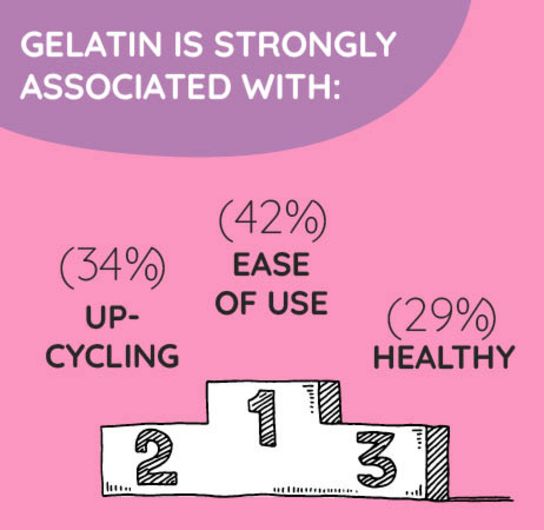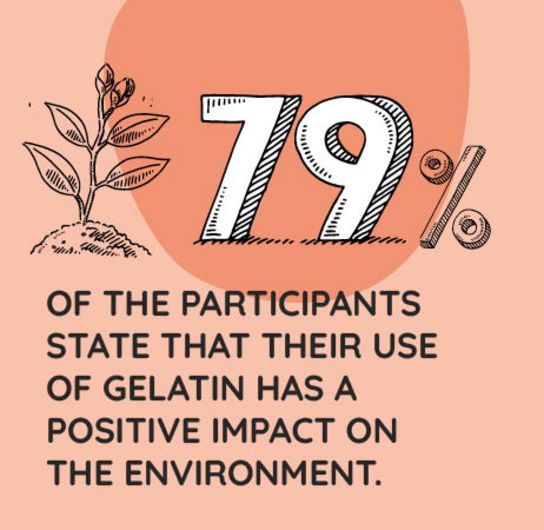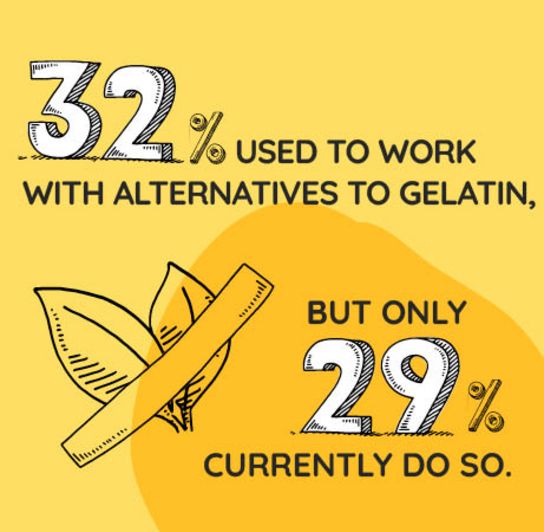The Future of Gelatin
As a traditional and enduring ingredient, gelatin has been used in many industries for decades. To assess its continued relevance and future prospects in today’s dynamic market, we conducted an international survey. Based on objective data gathered from participants from various industries in six countries, we can now confidently state: Gelatin remains a key ingredient for the future.
You can find out more about the specific data and the individual country results in the website category Global Survey.
Survey Approach
In this survey, GROW conducted interviews with a total of 600 people, 100 from each of the following six countries: Brazil, France, Germany, Japan, South Korea, and the U.S. The primary objective of this survey was to gain an in-depth understanding of the perceptions held by manufacturers who utilize gelatin in their production processes. We posed questions regarding gelatin usage, sustainability, and potential alternatives to gelatin.
The survey serves as a baseline measurement of attitudes towards gelatin and reveals the advantages and disadvantages of this versatile product. The panel participants were interviewed using a structured questionnaire online.
Executive Summary
The study’s findings reveal that gelatin is not only easy to use and perceived as healthy, but also environmentally friendly due to its upcycled nature. As upcycling gains traction among a growing number of companies, the use of gelatin aligns seamlessly with this burgeoning trend. Moreover, gelatin’s unique attributes, such as superior product performance, cost-effectiveness, and reliability, cement its status as a trusted and favored ingredient. Regarding potential substitutes for gelatin, the prevailing sentiment is that gelatin remains irreplaceable. Consequently, it can be concluded that the global industry will continue to rely on gelatin in the foreseeable future.
Gelatin as a Reliable and Sustainable Ingredient
To gauge the interviewees’ associations with gelatin, they were given a variety of options to choose from, reflecting their thoughts on gelatin (with a possibility of selecting multiple options from a list of ten). The outcome revealed that gelatin is most commonly linked with the attributes “Ease of Use” (42%), “Upcycling” (34%), and “Healthy” (29%).

When asked about the most crucial factors for companies when utilizing gelatin, respondents could select multiple responses from a list of eight. “Product Performance” topped the list with 40%, followed by “Low Cost of Use,” chosen by over a third of the participants, and "Reliability" at 32%.
In terms of the most important properties of gelatin for manufacturers' products, “Ease of Use” was once again the top choice for nearly half of the respondents, followed by “Texture"” at 38% and “Gel Formation” at 35% (multiple choices from a list of eight).
When asked about the current trends in the industry, 22% of respondents highlighted the “Recognition of Gelatin's Unique Properties”.
Overall, gelatin is perceived as an indispensable ingredient, impressing with its multitude of benefits. For more detailed insights, please visit the “Gelatin as an Ingredient” section on our website.
“Gelatin continues to play a crucial role in various industries, appreciated for its unique properties and versatility. Its blend of reliability, ease of use, and sustainable sourcing make it a vital ingredient for future innovations. At GROW, we firmly believe that it will maintain its essential role in both traditional and emerging applications, securing its position in the future of product development,” explains Caroline Brochard-Garnier, Chair of GROW.
Gelatin Perfectly Matches the Upcycling Trend
As previously noted, gelatin is strongly linked with the concept of upcycling. A significant 71% of participants are aware that gelatin is an upcycled product, derived from by-products of the meat and fish industry. This practice garners substantial support, with 87% of respondents deeming the integration of upcycled products like gelatin as important. The overall positive environmental impact of gelatin is highly rated across all countries, with 79% of respondents perceiving gelatin to have a positive environmental impact.
Gelatin, as a natural and clean label ingredient, aligns with the preferences of 88% of respondents who consider the use of natural ingredients to be important. Confirming this trend, one in five participants identifies less processed food as an emerging trend. For more detailed insights, please visit the “Environmental Impact of Gelatin” section on our website.

“The growing emphasis on sustainability has thrust upcycled ingredients like gelatin into the limelight. By transforming by-products of the meat and fish industry into valuable resources, gelatin not only reduces waste but also meets consumer demands for natural and clean label ingredients. As awareness increases, gelatin’s positive environmental impact and its contribution to a circular economy render it an increasingly vital choice for manufacturers and consumers,” comments Leo Manning, Vice-Chair of GROW.
Gelatin’s Performance Continues to be Unmatched
We also asked about the advantages and disadvantages of using alternatives to gelatin. Respondents could choose any number of options from a provided list of 11 answers. The most selected advantages of substitutes were “Price” (33%), “Sustainability” (32%) and “Product Performance” (29%). The disadvantages of replacing gelatin also included “Price” (28%) and underscored “Consumer preferences” (21%). The question covered 10 options in total. The fact that price is mentioned as both an advantage and a disadvantage of alternatives likely reflects the differences between markets and product categories.

In terms of trends, one quarter of participants see plant-based alternatives as an emerging trend. However, actual usage shows a tendency towards gelatin. While 43% of participants have at least considered replacing gelatin (or have already done so), this is mostly driven by vegan demand, price fluctuations, and allergies. But only 29% currently work with vegan alternatives, down from nearly a third of respondents in the past. Although substitutes for gelatin are trending, they are not yet able to compete with the properties of gelatin. For more detailed insights, please visit the “Alternatives to Gelatin” section on our website.
